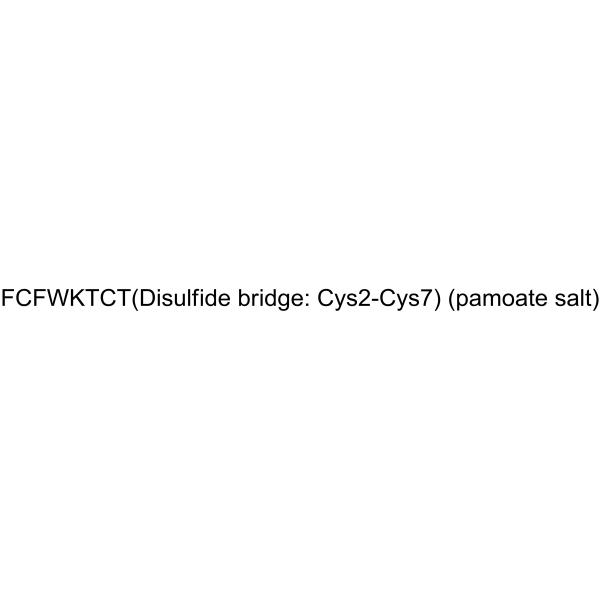135467-16-2
| Name | Octreotide pamoate |
|---|
| Description | Octreotide (SMS 201-995) pamoate is a somatostatin receptor agonist and synthetic octapeptide endogenous somatostatin analogue. Octreotide pamoate can bind to the somatostatin receptors which are mainly subtypes 2, 3 and 5. Octreotide pamoate increases Gi activity and reduces intracellular cAMP production. Octreotide pamoate has antitumor activity, mediates apoptosis and may also be used in disease studies in acromegaly[1][2]. |
|---|---|
| Related Catalog | |
| In Vitro | Octreotide pamoate (10‑8mM, 6 hours) induces phosphorylated‑glycogen synthase kinase 3β (GSK3β) phosphorylation and increases glycogen synthase (GS) activity[3]. Western Blot Analysis[3] Cell Line: Human hepatoblastoma HepG2 cell line Concentration: 10‑8mM Incubation Time: 6 hours Result: Increased the protein expression levels of phosphorylated‑Akt and GSK3β by 140.8% and 12.2%, respectively and the mRNA level of GS also increased. |
| In Vivo | Octreotide pamoate (subcutaneous injection, 30 mg/kg, once, 8 weeks) can inhibit tumor growth significantly with no effect on body weight[1]. Octreotide pamoate (intramuscular injection, 60 mg/kg, every 21 days, 42 days) inhibits serum insulin-like growth factor (IGF-I) without toxicity in dogs with appendicular osteosarcoma (OSA)[2]. Octreotide pamoate (subcutaneous injection, 40 μg/kg, Every 12 hours, 8 days) improves hepatic glycogen synthesis in obese male Sprague‑Dawley (SD) rats[3]. Animal Model: Female nude mice (nu/nu Balbc-A weighing 19-22 g)[1] Dosage: 30 mg/kg Administration: Subcutaneous injection; once; 8 weeks Result: Showed that the average volume of tumors treated was 25.8% of the control group and no effect on body weight. Animal Model: Dogs with appendicular OSA[2] Dosage: 60 mg/kg Administration: Intramuscular injection; Every 21 days; 42 days Result: Resulted in a 43% decrease in mean serum IGF-I compared with mean baseline concentrations. Animal Model: Male Sprague‑Dawley (SD) rats (3 weeks; 40-60 g)[3] Dosage: 40 μg/kg Administration: Subcutaneous injection; Every 12 hours; 8 days Result: Significantly improved fat deposition and reduced lipid infiltration. |
| References |
| Molecular Formula | C49H66N10O10S2.xC23H16O6 |
|---|
